When we think of prehistoric marine predators, many minds immediately jump to creatures like plesiosaurs or megalodons. However, perhaps the most formidable rulers of the Cretaceous seas were the mosasaurs – massive marine reptiles that dominated the oceans for over 20 million years. These remarkable creatures combined size, speed, and deadly hunting abilities that would make even the most fearsome modern marine predators seem tame by comparison. From their mysterious origins to their dramatic extinction, mosasaurs represent one of evolution’s most successful experiments in creating the perfect oceanic predator.
Origins and Evolution
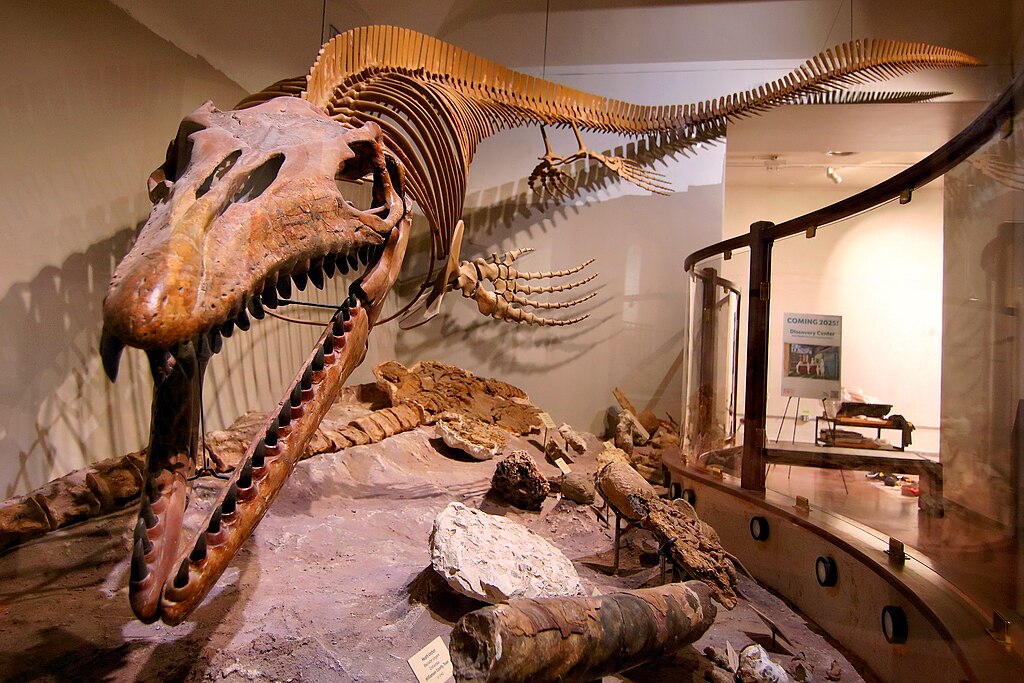
Mosasaurs first emerged approximately 98 million years ago during the Late Cretaceous period, evolving from small, semi-aquatic lizards related to modern monitor lizards and snakes. Their transition from land-dwelling ancestors to ocean masters represents one of the most dramatic evolutionary shifts in reptile history. Fossil evidence indicates that early mosasaurs retained some terrestrial characteristics, including less specialized limbs that eventually evolved into the powerful flippers seen in later species. This evolutionary journey took place over several million years, with mosasaurs gradually becoming better adapted to fully aquatic lifestyles. Their success was so complete that they eventually spread throughout the world’s oceans, becoming the dominant marine predators of their time before their eventual extinction 66 million years ago alongside the dinosaurs.
Physical Characteristics

Mosasaurs ranged dramatically in size, from relatively modest 3-meter species to the gigantic Mosasaurus hoffmannii, which could reach lengths of up to 17 meters – longer than a modern bus. Their bodies were streamlined and hydrodynamic, perfectly adapted for cutting through water with minimal resistance. Unlike their land-dwelling ancestors, mosasaurs possessed four paddle-like limbs that served as stabilizers and directional control rather than for propulsion. Their primary means of movement came from their powerful tails, which featured a distinctive downward kink supporting a large fin that propelled them through the water in a shark-like undulating motion. This combination of features made mosasaurs extraordinarily efficient swimmers capable of both sustained cruising and rapid bursts of speed when hunting prey.
Fearsome Dentition
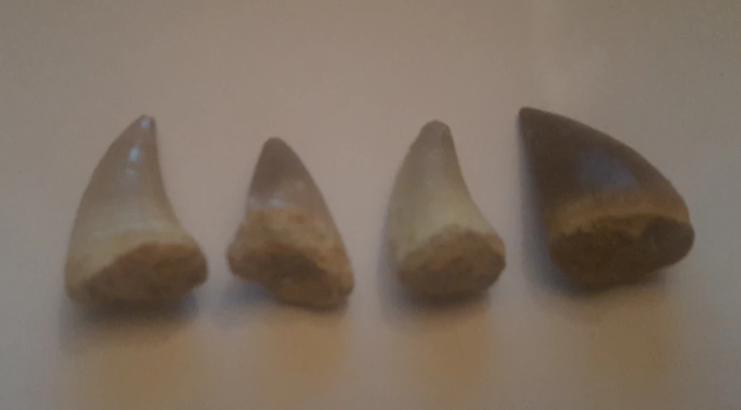
Perhaps the most terrifying aspect of mosasaurs was their formidable array of teeth, which were perfectly designed for their predatory lifestyle. Most species possessed numerous conical teeth that were sharp, recurved, and designed to penetrate deeply into prey, making escape nearly impossible once bitten. Unlike most reptiles, mosasaurs featured a second set of teeth on their palate called pterygoid teeth, which helped secure struggling prey as it was being swallowed. More specialized species evolved teeth adapted to particular diets – some developed crushing teeth for hard-shelled prey, while others maintained razor-sharp teeth for slicing through fish. What made their bite even more effective was their unique jaw structure – mosasaurs had a flexible joint in their lower jaw that allowed them to swing each side independently, creating a larger gape and improving their ability to handle large prey or awkwardly shaped meals.
The Unique Skull Structure
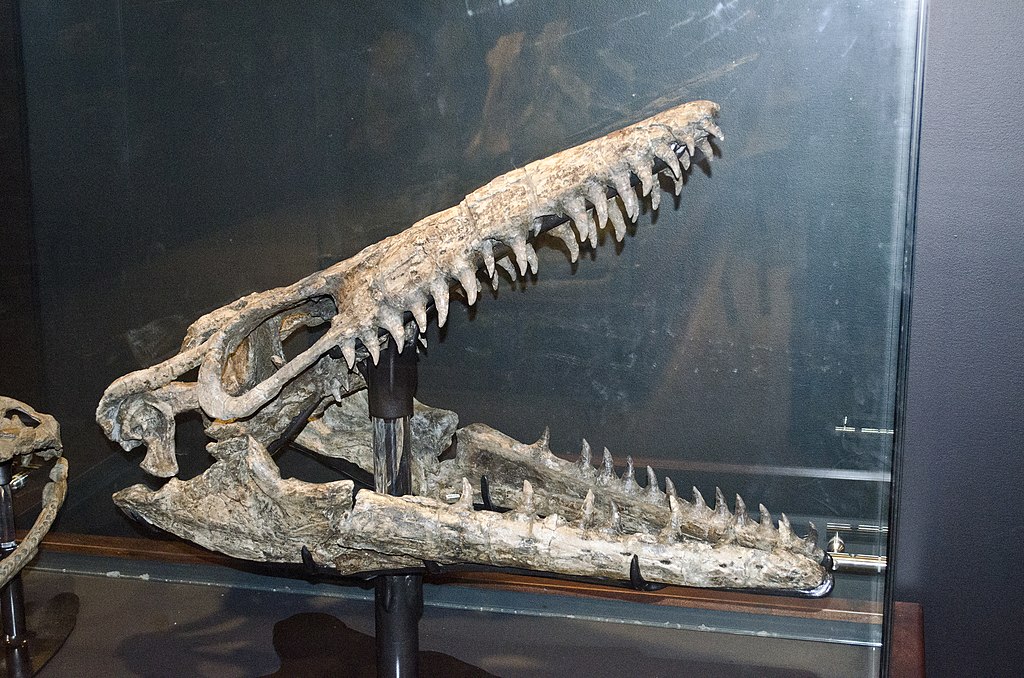
Mosasaur skulls reveal sophisticated adaptations that made them apex predators in the Cretaceous seas. Their skulls featured a unique kinetic structure that allowed for significant movement and flexibility. Unlike many reptiles, mosasaurs possessed a specialized joint called the metakinetic joint that connected the braincase to the rest of the skull, providing additional mobility during feeding. This remarkable adaptation enabled mosasaurs to manipulate large prey items with better control, essentially “walking” their jaws over food as they consumed it. The skull also housed enlarged salt glands near the nostrils, essential adaptations for marine life that allowed them to excrete excess salt consumed while drinking seawater. These specialized features, combined with powerful jaw muscles, created a feeding apparatus that few marine creatures could match in efficiency or deadliness.
Sensory Capabilities

Mosasaurs possessed highly developed senses that made them efficient hunters in the diverse marine environments they inhabited. Their eyes were positioned on the sides of their heads, providing excellent peripheral vision for detecting movement in the surrounding water. Evidence from fossil skulls suggests they had good vision, though it’s likely they relied on multiple senses while hunting. Particularly important was their sense of smell, with large olfactory bulbs in the brain indicating they could track prey through chemical signals in the water. Some researchers believe mosasaurs may have possessed specialized sensory organs similar to those found in modern snakes that allowed them to detect pressure changes and vibrations in the water. Their hearing was also likely well-developed, with specialized ear structures that would have enabled them to detect the movements of prey even in murky water conditions or low visibility environments.
Hunting and Feeding Behaviors
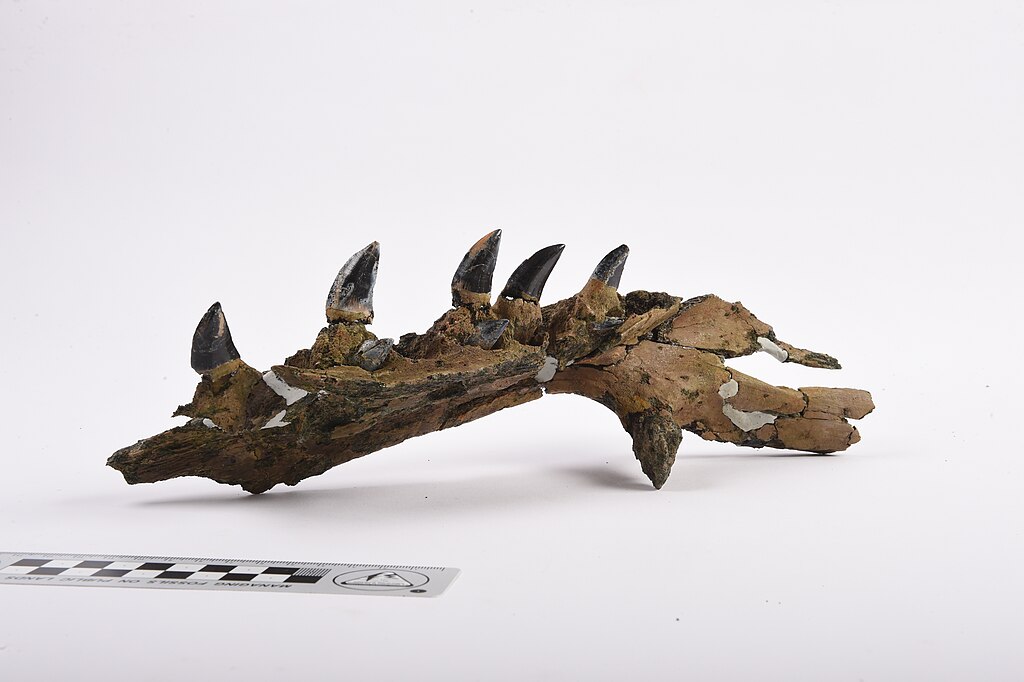
As apex predators, mosasaurs employed various hunting strategies depending on their species and prey preferences. Fossil evidence, including stomach contents and bite marks on other marine creatures, provides fascinating insights into their feeding ecology. Smaller mosasaur species likely specialized in hunting fish and squid, using their speed and agility to chase down prey in open water. Larger species, however, were capable of taking much more substantial prey, including sea turtles, ammonites, birds, and even other marine reptiles. Some mosasaurs appear to have been ambush predators, lying in wait before launching lightning-fast attacks on unsuspecting prey. Particularly interesting is evidence that some species were capable of “bite and tear” feeding strategies, using their powerful jaws and teeth to remove chunks from prey too large to swallow whole – a behavior rarely seen in modern reptiles but common in mammalian predators like wolves and lions.
Reproductive Strategies
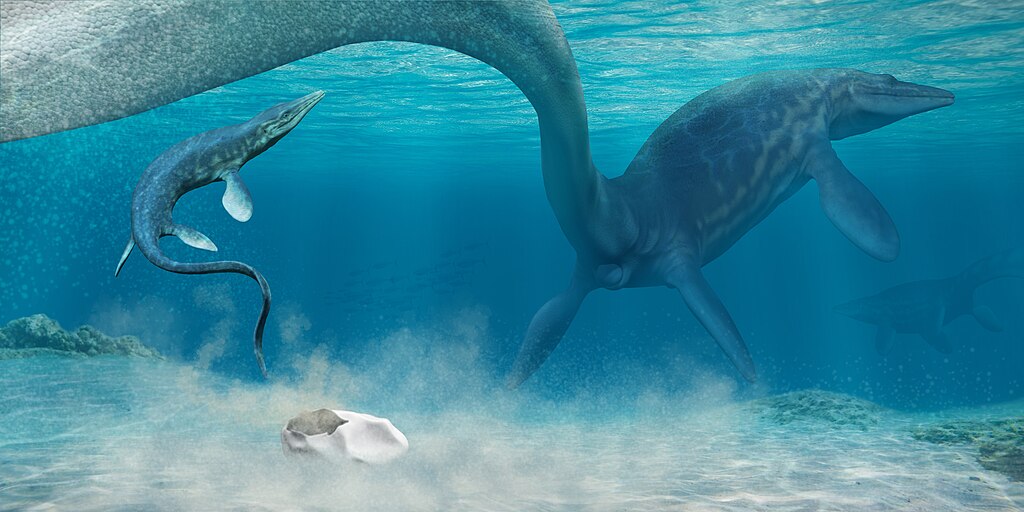
The reproductive biology of mosasaurs represents one of the most fascinating aspects of their life history. Unlike many marine reptiles that returned to land to lay eggs, mosasaurs were fully viviparous, giving birth to live young directly in the water. This conclusion is supported by remarkable fossil evidence, including specimens of pregnant females with embryos preserved inside their bodies. This adaptation freed mosasaurs from the vulnerability of returning to shore, allowing them to remain in their marine habitat throughout their lives. Young mosasaurs were likely born fully equipped for aquatic life, though probably at a smaller scale than adults, making them vulnerable to predation themselves. Scientists believe that juvenile mosasaurs may have occupied different ecological niches than adults, possibly feeding on smaller prey in shallower waters until they grew large enough to join the adult population in deeper offshore environments.
Global Distribution and Habitat
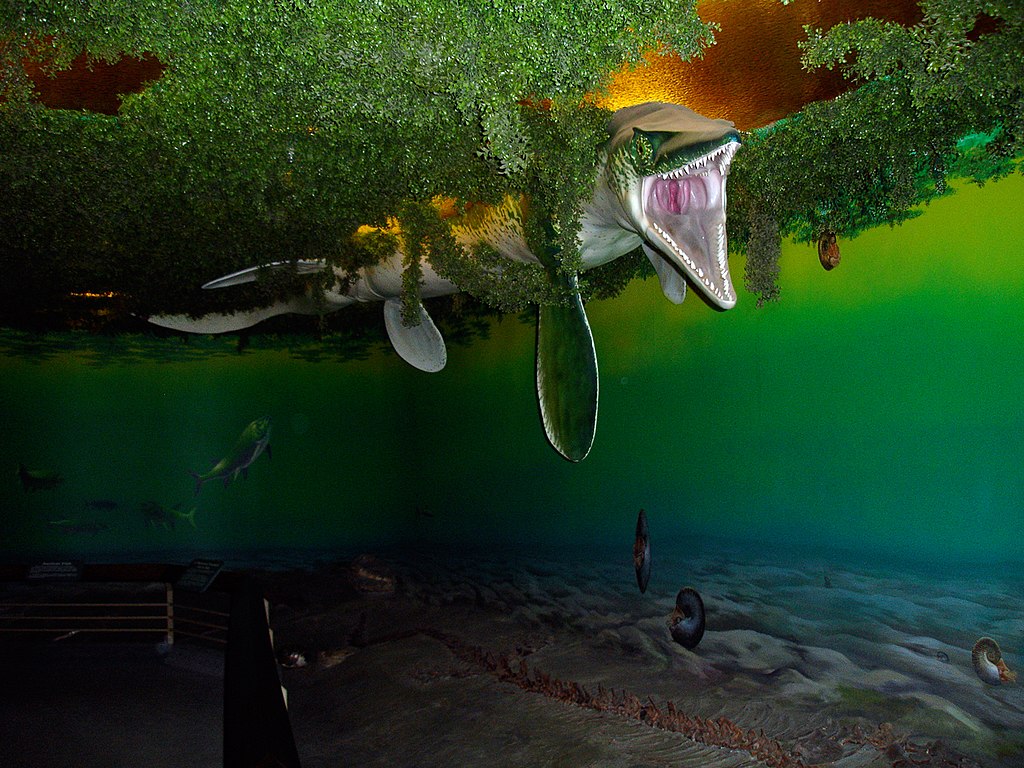
Mosasaurs achieved a nearly global distribution during their reign, with fossils discovered on every continent including Antarctica, demonstrating their extraordinary adaptability to different marine environments. They thrived primarily in shallow continental seas but evidence suggests some species ventured into deeper oceanic waters as well. Different mosasaur species adapted to specific ecological niches, with some preferring coastal environments rich in shellfish, while others hunted in open waters pursuing fast-swimming prey. Their remarkable success allowed them to colonize nearly every marine ecosystem available during the Late Cretaceous period. The Western Interior Seaway, a vast inland sea that split North America into two landmasses during this period, was particularly rich in mosasaur diversity, with numerous species coexisting by specializing in different prey and hunting strategies.
Diversity of Species

The mosasaur family tree includes an impressive diversity of species, with scientists having identified over 40 distinct genera encompassing around 70 known species. This diversity reflects their evolutionary success and ability to adapt to various ecological niches over their 20-million-year reign. Among the most famous was Mosasaurus hoffmannii, one of the largest species, which grew to lengths of up to 17 meters and likely preyed on anything it encountered. Tylosaurus was another formidable genus, notable for its elongated snout and aggressive hunting behavior. Smaller genera like Platecarpus specialized in catching fish and squid, while Globidens had unique rounded, crushing teeth perfectly adapted for feeding on hard-shelled prey like ammonites and sea turtles. This remarkable specialization allowed multiple mosasaur species to coexist in the same waters without directly competing for the same food resources, a key factor in their widespread success.
Mosasaurs vs. Other Marine Reptiles

The Cretaceous seas were home to various marine reptiles besides mosasaurs, including plesiosaurs, ichthyosaurs (in the early Cretaceous), and sea turtles, creating a complex ecosystem of large predators. What distinguished mosasaurs from these contemporaries was their unique combination of adaptations that made them particularly effective hunters. Unlike plesiosaurs with their long necks and relatively slow swimming speeds, mosasaurs were built for power and agility, more comparable to modern killer whales in their hunting style. Ichthyosaurs, which resembled dolphins, had largely disappeared by the time mosasaurs reached their peak diversity, possibly due to competition or changing oceanic conditions. Fossil evidence suggests that mosasaurs occasionally preyed on other marine reptiles, including smaller plesiosaurs and sea turtles, demonstrating their position at the very top of the marine food chain. This dominance likely played a significant role in shaping marine ecosystems during the Late Cretaceous period.
Cultural Impact and Discoveries

Mosasaurs have fascinated scientists and the public since their first scientific description in 1822, when Georges Cuvier examined a fossil skull found in a limestone quarry near Maastricht, Netherlands. This specimen of Mosasaurus hoffmannii became one of the first prehistoric reptiles scientifically described, predating even the earliest dinosaur classifications. Their fearsome appearance and predatory nature have made them popular subjects in museums worldwide, with spectacular mounted skeletons drawing crowds of fascinated visitors. Modern popular culture has embraced these marine predators as well, with mosasaurs featuring prominently in films like Jurassic World (albeit somewhat inaccurately portrayed) and numerous documentaries. Recent discoveries continue to enhance our understanding of these creatures, including exceptionally preserved specimens with soft tissue impressions that reveal details about their skin texture, coloration, and the structure of their tail fins.
Extinction and Legacy
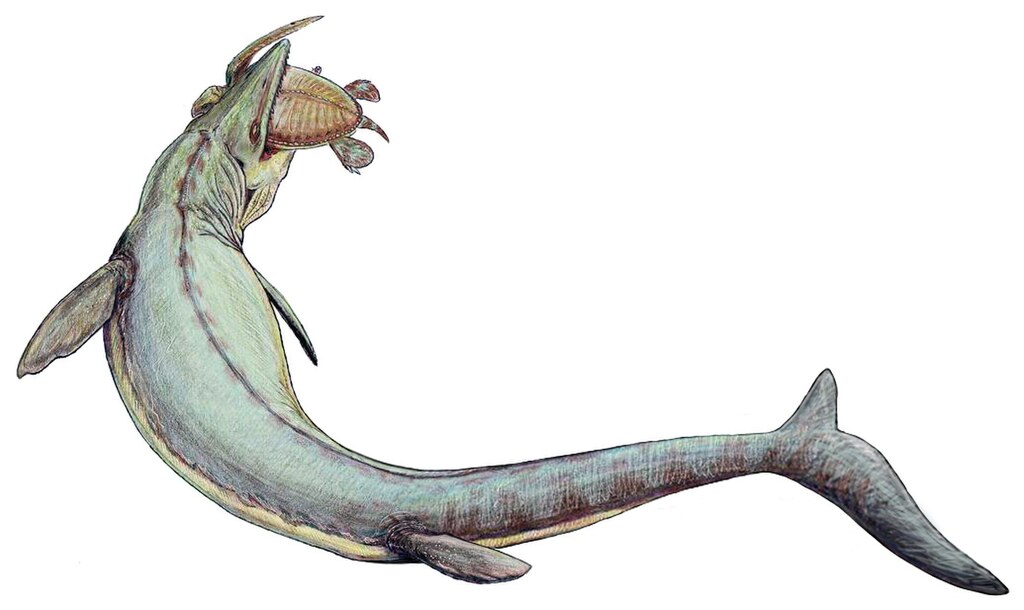
Like the dinosaurs, mosasaurs disappeared in the mass extinction event at the end of the Cretaceous period approximately 66 million years ago. This catastrophic event, likely triggered by an asteroid impact and exacerbated by massive volcanic eruptions, dramatically altered marine ecosystems worldwide. The extinction of mosasaurs left a significant ecological void in the world’s oceans, opening niches that would eventually be filled by emerging marine mammals and larger shark species. Despite their complete extinction, mosasaurs left an evolutionary legacy that contributes to our understanding of reptilian adaptation to marine environments. Their successful transition from land to sea offers important insights into evolutionary processes, demonstrating how terrestrial vertebrates can evolve specialized adaptations for aquatic life over relatively short geological timeframes. Modern research on mosasaurs continues to yield new discoveries about their biology, behavior, and evolutionary significance, ensuring their scientific legacy remains vibrant despite their disappearance millions of years ago.
Modern Scientific Research

Contemporary research on mosasaurs employs cutting-edge techniques that continue to reveal new insights about these ancient marine predators. Paleontologists now use CT scanning to examine fossil skulls non-destructively, creating detailed three-dimensional models of brain cases that provide clues about sensory capabilities and intelligence. Geochemical analyses of tooth enamel yields information about their diet, habitat preferences, and even body temperature regulation. Some researchers have employed biomechanical modeling to understand their swimming capabilities and bite force, suggesting that larger mosasaurs possessed one of the most powerful bites of any animal in Earth’s history. Perhaps most exciting are studies of exceptionally preserved specimens with soft tissue impressions that have revealed the shape of their tail fins, confirming that many species had shark-like tail structures rather than the paddle-shaped tails often depicted in older reconstructions. These ongoing discoveries continue to refine our understanding of mosasaurs, demonstrating that even after two centuries of study, these remarkable marine reptiles still have secrets to reveal.
Conclusion
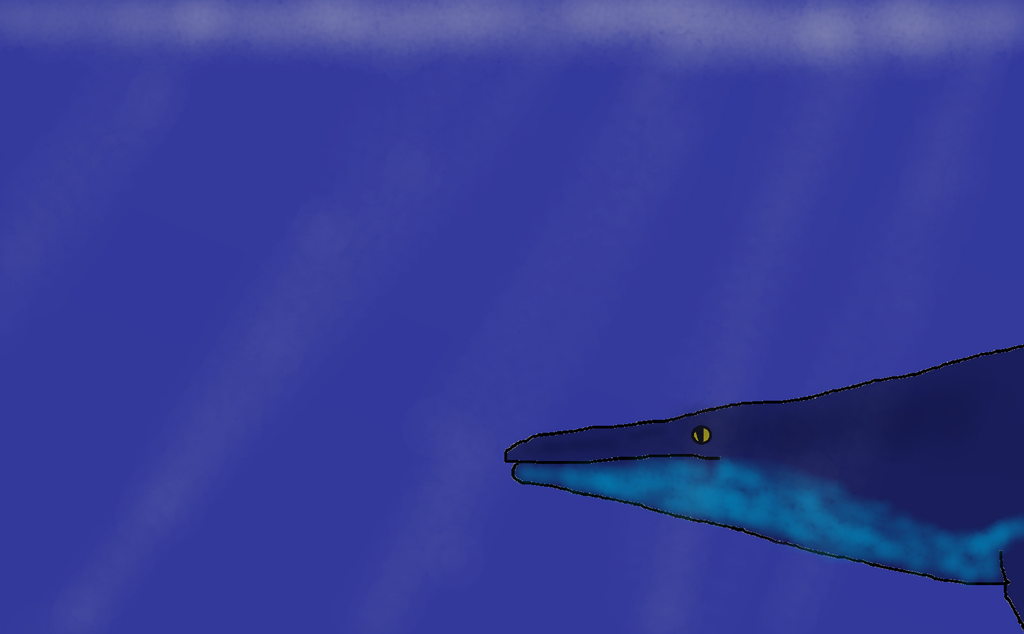
Mosasaurs represent one of evolution’s most successful experiments in creating marine predators, dominating the world’s oceans for over 20 million years during the Late Cretaceous period. Their journey from small terrestrial lizards to massive ocean predators showcases the remarkable adaptability of life and the specialized adaptations that can evolve over time. With their powerful swimming abilities, devastating jaws, and diverse feeding strategies, mosasaurs became the undisputed apex predators of their time, filling ecological niches that would later be occupied by whales and sharks following the Cretaceous extinction. As scientific techniques continue to advance, our understanding of these magnificent creatures grows ever deeper, revealing not just fearsome sea monsters, but sophisticated marine predators whose evolutionary success story continues to captivate both scientists and the public alike.



